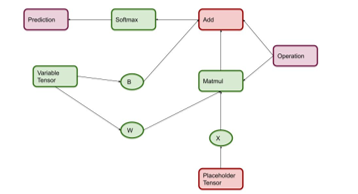Facial Recognition with the Super Pixel Entropy Estimation with the Virtual Assistance System
Keywords:
Facial Recognition, Super pixel, Virtual Assistance, Machine Learning, EntrophyAbstract
Face recognition system is the developing technology for the recent years. However, the traditional facial recognition system subjected to vast range of challenges due to variation in the structural features, color, and variation in the face. Traditionally, the facial recognition system comprises of the facial features with the landmark estimation. Bur those technique are not sufficient enough to extract the appropriate pixel in the identification of the features. This paper developed a Facial Super Pixel Entropy (FSPE) integrated with the virtual assistance for the identification of faces. The proposed FSPE model uses the segmentation of the super pixel in the facial images with the consideration of the entropy estimation. The performance of the proposed FSPE model is evaluated for the consideration of the different feature model for the processing, The analysis expressed that the proposed FSPE model achieves the segmentation accuracy of 99% and the accuracy is achieved as the 99%. This implies that propsoed FSPE model is effective for the facial recognition system with the virtual assistant.
Downloads
References
Xia, J., Yuan, X., Li, J., Lu, S., Cui, X., Li, S., & Fernández-Ramírez, L. M. (2020). Foreign Recognition System for electric vehicle wireless charging. Electronics, 9(5), 805.
Coe, J., & Atay, M. (2021). Evaluating impact of race in facial recognition across machine learning and deep learning algorithms. Computers, 10(9), 113.
Raju, K., Chinna Rao, B., Saikumar, K., & Lakshman Pratap, N. (2022). An Optimal Hybrid Solution to Local and Global Facial Recognition Through Machine Learning. In A Fusion of Artificial Intelligence and Internet of Things for Emerging Cyber Systems (pp. 203-226). Springer, Cham.
Singhal, P., Srivastava, P. K., Tiwari, A. K., & Shukla, R. K. (2022). A Survey: Approaches to facial detection and recognition with machine learning techniques. In Proceedings of Second Doctoral Symposium on Computational Intelligence (pp. 103-125). Springer, Singapore.
Salama AbdELminaam, D., Almansori, A. M., Taha, M., & Badr, E. (2020). A deep facial recognition system using computational intelligent algorithms. Plos one, 15(12), e0242269.
Asaithambi, S. P. R., Venkatraman, S., & Venkatraman, R. (2021). Proposed big data architecture for facial recognition using machine learning. AIMS Electronics and Electrical Engineering, 5(1), 68-92.
Finizola, J. S., Targino, J. M., Teodoro, F. G., & Lima, C. A. (2019, July). Comparative study between deep face, autoencoder and traditional machine learning techniques aiming at biometric facial recognition. In 2019 International Joint Conference on Neural Networks (IJCNN) (pp. 1-8). IEEE.
Boulos, M. M. (2021). Facial recognition and face mask detection using machine learning techniques.
Akter, T., Ali, M. H., Khan, M., Satu, M., Uddin, M., Alyami, S. A., ... & Moni, M. A. (2021). Improved transfer-learning-based facial recognition framework to detect autistic children at an early stage. Brain Sciences, 11(6), 734.
Van Noorden, R. (2020). The ethical questions that haunt facial-recognition research. Nature, 587(7834), 354-359.
Raji, I. D., & Fried, G. (2021). About face: A survey of facial recognition evaluation. arXiv preprint arXiv:2102.00813.
Sarkar, E., Benkraouda, H., & Maniatakos, M. (2020). FaceHack: Triggering backdoored facial recognition systems using facial characteristics. arXiv preprint arXiv:2006.11623.
Nachmani, O., Saun, T., Huynh, M., Forrest, C. R., & McRae, M. (2022). “Facekit”—Toward an Automated Facial Analysis App Using a Machine Learning–Derived Facial Recognition Algorithm. Plastic Surgery, 22925503211073843.
Fábián, I., & Gulyás, G. G. (2020). De-anonymizing facial recognition embeddings. Infocommunications Journal, 12(2), 50-56.
Singh, N. S., Hariharan, S., & Gupta, M. (2020). Facial recognition using deep learning. In Advances in Data Sciences, Security and Applications (pp. 375-382). Springer, Singapore.
Omoyiola, B. O. (2018). Overview of biometric and facial recognition techniques. IOSR journal of computer engineering (IOSRJCE), 20(4), 1-5.
Finizola, J. S., Targino, J. M., Teodoro, F. G. S., & Moraes Lima, C. A. D. (2018, November). A comparative study between deep learning and traditional machine learning techniques for facial biometric recognition. In Ibero-American Conference on Artificial Intelligence (pp. 217-228). Springer, Cham.

Downloads
Published
How to Cite
Issue
Section
License

This work is licensed under a Creative Commons Attribution-ShareAlike 4.0 International License.
All papers should be submitted electronically. All submitted manuscripts must be original work that is not under submission at another journal or under consideration for publication in another form, such as a monograph or chapter of a book. Authors of submitted papers are obligated not to submit their paper for publication elsewhere until an editorial decision is rendered on their submission. Further, authors of accepted papers are prohibited from publishing the results in other publications that appear before the paper is published in the Journal unless they receive approval for doing so from the Editor-In-Chief.
IJISAE open access articles are licensed under a Creative Commons Attribution-ShareAlike 4.0 International License. This license lets the audience to give appropriate credit, provide a link to the license, and indicate if changes were made and if they remix, transform, or build upon the material, they must distribute contributions under the same license as the original.





